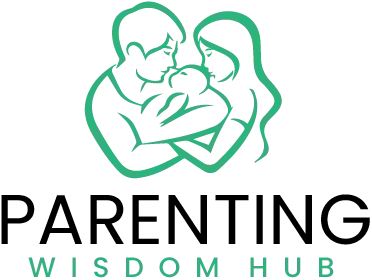Introduction
The initial moments of a newborn’s life are magical. New parents must learn about infant oral care despite the enthusiasm. Despite its insignificance, washing your newborn’s tongue is critical for proper dental hygiene and beautiful smiles.
Learn how to clean the newborn tongue with this complete tutorial. Provide excellent tongue cleaning methods and practical recommendations to make the procedure easy. As a new mom, doctor, or childcare worker, you’ll discover tips for baby dental health.
Newborn Oral Care
When caring for your infant, oral hygiene may not be the first thing that comes to mind. However, developing healthy habits from the start can have lasting effects. Cleaning your newborn’s tongue is a crucial component of this routine, and here’s why it’s essential.
First, babies are susceptible to yeast infection and mouth thrush. Not wiping your baby’s tongue frequently might cause thrush, which can make feeding uncomfortable and need medical care. You may reduce this risk by carefully cleansing the tongue.
Second, cleaning your newborn’s tongue can improve their taste perception. Milk residue can dull their taste buds, so removing it can make feeding time more enjoyable.
Finally, early dental care establishes lasting habits. Tongue washing helps your infant learn about oral hygiene from the start. Leading paediatrician Dr Lisa Baxter says, “Establishing a consistent oral care routine, including tongue cleaning, helps children understand the importance of taking care of their teeth and mouth.”
Anatomy of a Newborn’s Mouth
Learning about the structure of your baby’s mouth is helpful before you start cleaning their tongue. This information lets you carefully care for your baby’s mouth and teeth. Being gentle when caring for a newborn’s mouth is essential because it is small and sensitive.
Underneath a newborn’s tongue is the frenulum, a small fold of tissue that anchors the tongue to the floor of the mouth. This area is sensitive, so be careful when cleaning around it.
Also, brand-new gums are smooth and pink. These gums are essential for eating because they support the tongue while nursing or bottle-feeding. Even if your teeth haven’t come in yet, caring for your gums is vital because they support good teeth in the future.
Choosing the Right Tools for Tongue Cleaning
Choosing the right tools for cleaning your baby’s tongue is very important to ensure it is safe and effective. Here are some choices to think about:
- Soft Cloth: A clean, soft cloth or gauze pad is a popular choice for tongue cleaning. Its gentle texture is perfect for wiping away milk residue without irritating it. Ensure that the fabric is damp but not dripping wet.
- Silicone Finger Brush: A silicone finger brush is another excellent option. These brushes are designed to fit over your finger, allowing you to easily reach your baby’s tongue. The soft bristles provide gentle cleaning and are easy to clean after use.
- Baby Toothbrush: Once your baby grows older, you can transition to a baby toothbrush with soft bristles. These brushes are designed for infants and are safe for their delicate mouths.
No matter what tool you pick, ensure it is clean and has no sharp edges. Check the tools often for damage and replace them if necessary.
Preparing for Tongue Cleaning
Getting ready is important to clean your baby’s tongue without any stress. To get prepared, do these things:
- Wash Your Hands: Before handling your baby’s mouth, wash your hands thoroughly with soap and water to prevent the transfer of germs.
- Gather Supplies: Have all the necessary supplies within reach, including the chosen cleaning tool, a clean cloth, and a small cup of water.
- Choose the Right Time: Select when your baby is calm and content, such as after a feeding or bath. This will help ensure cooperation and reduce fussiness during the process.
Table 1 below offers a quick checklist to help you prepare for tongue cleaning:
|
Preparation Steps |
Description |
|---|---|
|
Wash Hands |
Use soap and water to clean your hands thoroughly |
|
Gather Supplies |
Keep the cleaning tool, cloth, and water nearby |
|
Choose the Right Time |
Clean when your baby is calm and content |
Step-by-Step Guide to Cleaning Your Newborn’s Tongue
Now that you have the right tools and are ready, you can start cleaning your baby’s tongue. Just do these easy things:
- Find a Comfortable Position: Hold your baby securely in your lap or place them on a changing table. Ensure they are comfortable and relaxed.
- Moisten the Cleaning Tool: If using a cloth or gauze pad, dampen it with water. If using a silicone finger brush, wet it slightly.
- Gently Open Baby’s Mouth: Using your finger, gently lower your baby’s lower lip to encourage them to open their mouth.
- Clean the Tongue: Run the cleaning tool over your baby’s tongue with gentle circular motions. Be sure to cover the entire surface, including the sides.
- Wipe Away Residue: After cleaning, use a clean cloth to remove any remaining residue from your baby’s mouth.
Do this once daily, which is best in the morning or before bed. Being consistent is essential for keeping your teeth clean.
What to Do if Your Baby Resists
Babies often don’t want their tongues cleaned, especially if they have never felt it. To help you get past barriers, here are some tips:
- Stay Calm and Patient: Babies can sense tension, so remain calm and patient throughout the process. Take breaks if needed and try again later.
- Use Distraction: Engage your baby with a favourite toy or a gentle song during tongue cleaning. Distraction can make the experience more pleasant for them.
- Make it a Routine: Incorporate tongue cleaning into your baby’s daily routine. Over time, they will become more cooperative and accustomed to the process.
- Seek Help if Needed: If your baby consistently resists tongue cleaning, consult your paediatrician or a childcare professional for additional guidance.
Signs of a Healthy Newborn Tongue
You can check your baby’s mouth health by regularly cleaning their tongue. Here are some signs of a healthy newborn tongue:
- Pink and Moist: A healthy tongue should appear pink and moist. It should not be dry or have any unusual discolouration.
- Smooth Texture: The surface of your baby’s tongue should be soft, without any bumps or lesions.
- No Residue: There should be no visible milk residue on your baby’s tongue after cleaning.
If you spot any strange changes in your baby’s tongue or mouth health, you should see a doctor for more information.
Common Concerns and Myths Debunked
Newborn tongue cleaning is the subject of several everyday worries and myths. Let’s talk about a few of them:
- Myth: “Tongue cleaning is unnecessary for babies.”
Tongue cleaning is essential for maintaining oral hygiene and preventing conditions like oral thrush.
- Myth: “Cleaning a baby’s tongue is painful.”
Gentle tongue cleaning with the correct instruments is painless for babies.
- Myth: “You should wait until teeth appear to start oral care.”
An oral care routine, including tongue cleaning, should begin in infancy to promote healthy habits.
Expert Quotes on Newborn Oral Hygiene
For more information, here are some quotes from doctors and people who work in child care:
- Dr. Emily Turner, a pediatric dentist, says, “Early oral care is the foundation for a lifetime of healthy smiles. Tongue cleaning is a vital part of this routine.”
- Sarah Mitchell, a Certified Childcare Professional, adds, “Parents often overlook tongue cleaning, but it’s a simple step that can make a significant difference in a baby’s oral health.”
- Dr. Jonathan Lee, the paediatrician, notes, “By incorporating tongue cleaning into daily care, parents can help prevent oral thrush and ensure their baby experiences the full range of flavours during feeding.”
Creating a Comprehensive Oral Care Routine
Cleaning the baby’s tongue is essential to caring for their teeth, but it’s only one part of the process. Take these extra steps into account:
- Wipe Gums After Feeding: Use a clean, damp cloth to wipe your baby’s gums after each feeding to remove milk residue.
- Monitor Pacifier and Bottle Use: Limit pacifier and bottle use to prevent prolonged exposure to sugar, which can affect oral health.
- Schedule Pediatric Dental Visits: Schedule regular dental visits to ensure proper oral development once your baby’s first tooth erupts.
Incorporating these practices into your routine can create a strong foundation for your baby’s oral health.
Conclusion
In conclusion, tongue cleaning your newborn’s mouth is a simple yet important approach to safeguarding their health. Understanding the significance of this practice, using the correct equipment, and maintaining a regimen will help your infant establish healthy dental habits and a lifetime of excellent oral health.
For individualized newborn oral care advice, see doctors or dentists. Starting now is the first step to a healthy grin.
Explore our suggested resources and join our community of parents and professionals who love fostering blossoming smiles for baby oral care and parenting ideas.


